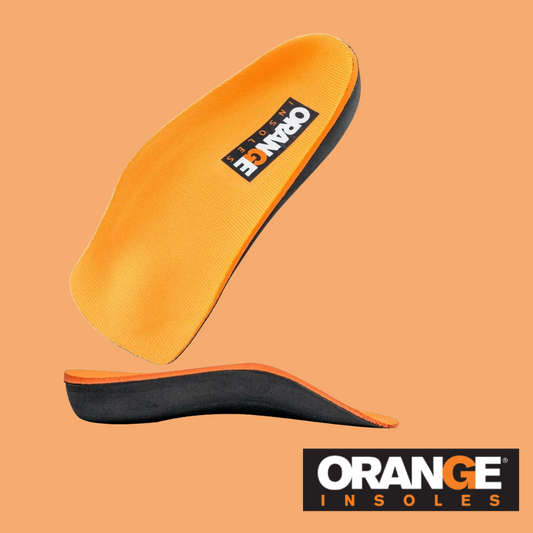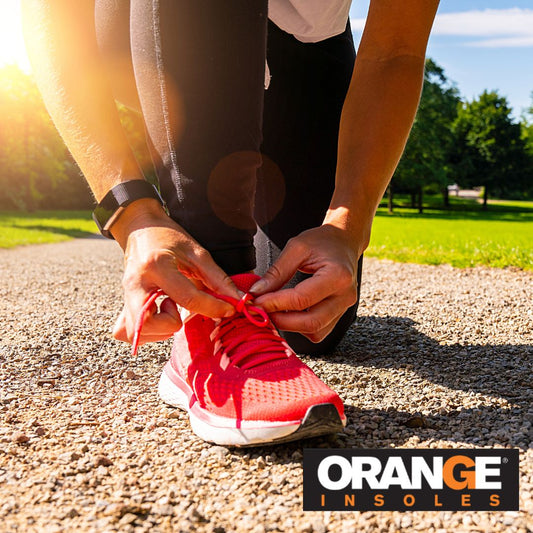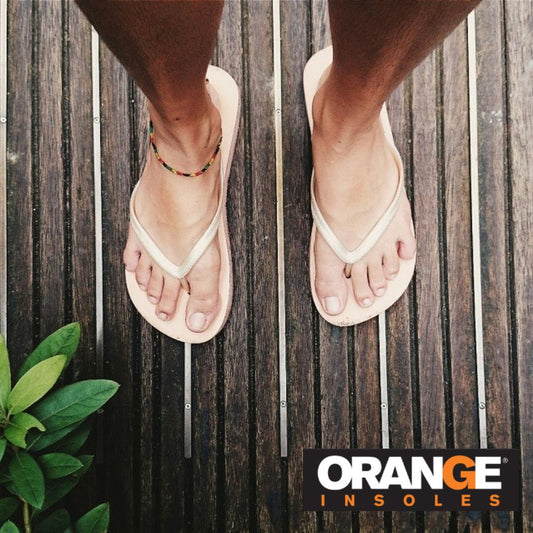Walking is a great form of exercise. If done an average of 30 minutes/day, you can improve cardiovascular fitness, strengthen your bones, and lean down.
Yet, this assumes you’re walking with good form and proper support under foot. If not, it’s possible that your effort to improve your health will actually result in injury. Here are some symptoms you shouldn’t ignore.
Note: Always consult your physician before beginning any exercise program. This general information is not intended to diagnose any medical condition or to replace your healthcare professional. If you experience any pain or difficulty when walking, stop and consult your healthcare provider.
Symptom #1: The Front of Your Knee is Swollen and Tender
If the front of your knee is tender or swollen you could have strained or damaged tendons in your knee. Tendonitis, which is inflammation of the tendon, is a painful condition that can cause pain while walking.
If the pain does not diminish after some rest, you should visit your doctor to get the diagnosis confirmed. Your treatment plan may include some rest but also some daily stretching and strengthening exercises. Both of these problems can be caused by the knee becoming stressed and this can be created by ill-fitting shoes or shoes that do not support the load of your body evenly.
Symptom #2: Shin Pain
If you’re feeling pain along the front of your shins, you may have shin splints. Shin splints are caused by tiny stress fractures forming along your shin bones and are often the result of exercise.
Shin splints usually present when you have been doing more exercise than normal. Increasing your activity too quickly is a common factor for shin splints. Some examples of activities that might cause shin splints include doubling your walking mileage or dramatically increasing your time on your feet at work. The best cure for these is rest but if they persist a physical therapist may be able to help reduce the pain and introducing stretching and strengthening exercises will prevent them from coming back.
Think you may have shin splints? Click here to read our guide to shin splints.
Symptom #3: Lower Back Pain
Pain in your lower back could be caused by many things, including a tear or sprain in the muscles of your lower back resulting from poor posture, misalignment, or an injury.
If you have persistent pain, you should visit a physical therapist or doctor to get a formal diagnosis. Your doctor will be able to help you with exercises and stretches to strengthen your back and prevent the muscles from locking up.
Symptom #4: Pins & Needles in Your Legs
Sciatica often feels like a peculiar muscle cramp that is accompanied by pins and needles in the back of your leg and foot. It usually gets worse when you are walking.
In most cases, rest and light exercise are the best cure for a problem with sciatica. In many cases, it’ll heal itself within a few weeks. However, if it persists, you should consult a physician for treatment options.
Symptom #5: Heel Pain
Plantar Fasciitis and heel pain are among the most common complaints of many of our customers.
This condition is created by an inflammation of the connecting tissues (plantar fascia) from your heel to your toes. It can create pain anywhere along your foot, but most people feel the pain in the base of their heel. It is one of the most common injuries in the country..
In general, plantar fasciitis is an overuse injury most commonly caused by over pronation. If you’ve just started a walking routine and are experiencing the pain, there’s a good chance you’re doing a little too much just a little too soon. Cut back a little. You may also benefit from making sure that your shoes are providing enough support for your feet. Good supporting shoes and/or insoles help to align and prevent over pronation.
If the problem persists, make sure you consult your doctor for proper treatment options.
The 5 most frequently asked questions about heel pain...answered! Check out our guide.
Symptom #6: Bunions
Bunions develop when the bones in the joint on the outer side of your toes become misaligned. This causes swelling, inflammation and pain.
Generally, bunions occur when there’s insufficient arch support or support under the ball of your foot..for instance, if you have flat feet. Excessive pronation and wearing high heels or poorly fitted shoes can aggravate them.
While bunions can often be treated with a holistic approach to health, if the pain persists, your doctor may provide a different treatment plan.
Symptom #7: Achilles Tendonitis
Another common walking injury is Achilles tendonitis. Typically, pain occurs along the Achilles tendon during or after walking and is tender to the touch. Sometimes, you may experience a limited range of motion and stiffness or swelling just over the Achilles tendon.
Generally, this is caused by excessive pronation, weak muscles in the feet, or tight calf muscles. As with many injuries, stretching and strengthening can help heal and rehabilitate. Good support can also help.
Symptom #8: Neuroma
If you experience pain in the ball of your foot (or perhaps a burning, tingling sensation), you may have a neuroma. This occurs when the bundle of nerve endings is inflamed, enlarging the tissue surrounding the nerves. The resulting pressure on the nerve is what causes the pain you’re experiencing.
Like many of these symptoms, it can be caused by excessive pronation, flat feet, and wearing shoes that don’t fit well (too tight in the forefoot). It can be aggravated by prolonged standing.
To reduce the pain associated with the symptom, make sure you have shoes that fit, stretch and strengthen your feet, and make sure you have good support.
Symptom #9: Hip Pain
Hip pain is another common issue our customers share with us. It can be caused by many things from arthritis to injury.
However, in many cases, the cause is poor alignment, muscle imbalances, or possible leg length discrepancies. Because our hips are part of our core body, if left untreated, it can cause a lot of other problems (such as back pain and sciatica). To learn more, check out our posts on how to see if it’s hip alignment or a lack of support that’s causing your hip pain.
Stretch, Strengthen, Support
Walking has many, many health benefits and we’re glad you’re working to be active. Many of these symptoms are common and can be treated at home with good stretching and strengthening exercises. Our bodies are made to heal and learning to listen to them (pains and all!) is a great way to get in tune with our health.
In some cases, you may need some extra support to correct over-pronation and get you re-aligned. New shoes and insoles that fit right and provide enough support would be highly recommended. Orange Insoles could be a great corrective device to assist your body in getting better. However, as with anything, if your pain or discomfort persists for more than a few days or weeks, please go see your doctor.

























































